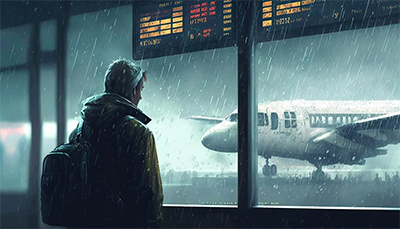Understanding Flight Delays And Cancellations

Flight delays and cancellations are a frequent source of frustration for air travellers worldwide, disrupting carefully planned itineraries and causing inconvenience. These disruptions can be attributed to various factors, each playing a significant role in affecting flight operations.
Weather Conditions
One of the most common causes of flight delays is adverse weather conditions. Severe thunderstorms, heavy snowfall, dense fog, and strong winds can impair visibility, disrupt airport operations, and pose safety risks to aircraft. In such situations, airlines and airport authorities prioritise passenger safety by delaying or cancelling flights until conditions improve, ensuring that flights can only resume when it is safe to do so.
Air Traffic Congestion
Airports in major cities often experience heavy traffic, especially during peak travel times such as holidays and weekends. This congestion can lead to delays in obtaining takeoff and landing slots, as well as longer taxiing times on the ground. Additionally, airspace congestion can necessitate rerouting of flights to maintain safe distances between aircraft, further contributing to delays.
Technical Issues and Maintenance
Technical problems with aircraft or airport equipment can also lead to flight delays or cancellations. Mechanical failures, issues with avionics systems, or problems with ground support equipment require thorough inspection and repair before flights can proceed safely. Airlines adhere to strict safety regulations, conducting comprehensive maintenance checks to ensure the airworthiness of their aircraft, which can sometimes cause delays as repairs are carried out.
Operational Challenges
Operational issues within airlines, such as crew scheduling problems or last-minute changes in flight assignments, can contribute to delays. Flight crews are subject to strict duty regulations that limit their working hours and require sufficient rest periods between flights. Unexpected changes in crew availability or scheduling conflicts may necessitate the reassignment of personnel or the identification of replacement crews, resulting in delays in flight departures.
Security Measures
Enhanced security measures, such as increased screenings or security incidents at airports, can also lead to flight delays or cancellations. While these measures are essential for ensuring passenger safety and preventing potential threats to aviation, they can result in delays as authorities conduct thorough checks or implement temporary restrictions on airport operations.
External Factors and Unforeseen Events
Flight delays and cancellations can also occur due to unforeseen events or external factors beyond the control of airlines or airport authorities. These may include medical emergencies onboard aircraft, wildlife on runways, strikes by airport personnel or air traffic controllers, or disruptions caused by geopolitical events or natural disasters in destination regions.
In light of these challenges, tools like the delayed flight compensation and the flight delay compensation calculator offer a way for passengers to understand their rights and potential compensation entitlements. These tools enable travellers to check if they qualify for compensation of up to £520 per passenger for delayed, cancelled, or overbooked flights. By empowering passengers with knowledge of their rights, such calculators help alleviate some of the financial burdens associated with travel disruptions.
Efforts to mitigate flight delays and cancellations include advancements in weather forecasting technologies, improvements in airport infrastructure, and enhanced communication strategies to keep passengers informed about their flight status and alternative travel arrangements. Despite these efforts, safety remains the top priority in managing air travel disruptions, ensuring that all measures are taken to prioritise passenger well-being while striving for more reliable travel experiences. By understanding the causes and implications of flight delays and cancellations, both airlines and passengers can work together to navigate these challenges and foster smoother travel experiences globally.


